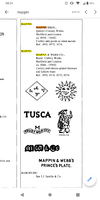I had my eye out for a vintage straight razor for awhile, and armed with the little knowledge I gathered, I discovered this little beauty. I was mainly looking for good steal, the country or city of origin. I knew I had a winner in Sheffield. I had heard that thinner razors were easier for beginners, but I couldn’t deny the weight/quality of the Mappin Sun Razor.
With all my extra free time, living in our current reality... I plan to restore this razor for personal use, and I am looking for advise. This site is a wealth of general knowledge, but I was curious to listen to the feed back from others that have gone through the process before. The blade has definitely seen better days, but I don’t want to ruin it by making a stupid mistake.
I’ve done a little bit of research, and I can’t find any just like this one. The brass scales /full wedge /barber’s notch.
I appreciate anything I can get.
Cheers,
Ryan
With all my extra free time, living in our current reality... I plan to restore this razor for personal use, and I am looking for advise. This site is a wealth of general knowledge, but I was curious to listen to the feed back from others that have gone through the process before. The blade has definitely seen better days, but I don’t want to ruin it by making a stupid mistake.
I’ve done a little bit of research, and I can’t find any just like this one. The brass scales /full wedge /barber’s notch.
I appreciate anything I can get.
Cheers,
Ryan
Attachments
-
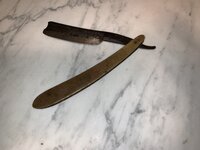 7E6E8DC0-170A-482C-A42A-0AC0308C39DE.jpeg2.5 MB · Views: 30
7E6E8DC0-170A-482C-A42A-0AC0308C39DE.jpeg2.5 MB · Views: 30 -
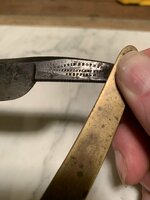 D195CB41-2C56-460A-8BF3-7C4A646EF703.jpeg1 MB · Views: 34
D195CB41-2C56-460A-8BF3-7C4A646EF703.jpeg1 MB · Views: 34 -
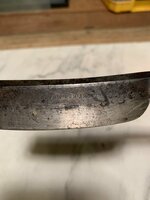 59DAAE1E-5EA1-4BDB-ABE8-63921B328E68.jpeg869.8 KB · Views: 34
59DAAE1E-5EA1-4BDB-ABE8-63921B328E68.jpeg869.8 KB · Views: 34 -
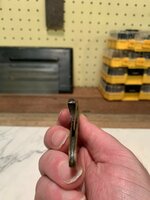 6519975B-5769-4309-A9E7-2EC9BDBE653A.jpeg670.3 KB · Views: 32
6519975B-5769-4309-A9E7-2EC9BDBE653A.jpeg670.3 KB · Views: 32 -
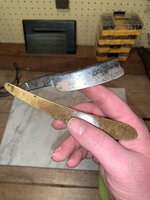 5CBF3F53-114C-4832-854C-84DC1C7337E1.jpeg1.4 MB · Views: 31
5CBF3F53-114C-4832-854C-84DC1C7337E1.jpeg1.4 MB · Views: 31 -
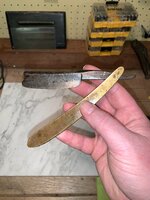 2977D8C0-75D7-4E4D-B197-51E55541E2AA.jpeg1.3 MB · Views: 30
2977D8C0-75D7-4E4D-B197-51E55541E2AA.jpeg1.3 MB · Views: 30 -
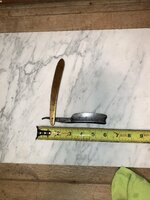 95332DEB-6845-413D-B235-C148F6824012.jpeg1.6 MB · Views: 27
95332DEB-6845-413D-B235-C148F6824012.jpeg1.6 MB · Views: 27
